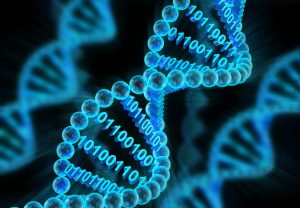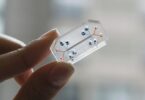Since the beginning of the great race towards the study of the human genome, the importance of computer science in medicine has not stopped increasing. This combination of computer science and statistics, called bioinformatics, has a place in almost all areas of modern medicine and molecular biology: sequencing, gene annotation, evolutionary biology, mutation analysis, large-scale image analysis and many others. Of all the emerging bioinformatics disciplines, perhaps the most interesting are modeling, simulation and visualization.
Scientists use the term in silico to describe the modeling, simulation and visualization of biological and medical processes through computers. The emergence of in silico medicine is the result of advances in medical informatics over the past two decades.
In silico is a term that means “made by computer or via computer simulation”. It is a phrase that by its relation with “in silicium” it is translated by “in silicon” which makes reference to the material of which the semiconductors are made that allow to store information in the computer.
In silico systems are used for the prediction and validation of current techniques and strategies, such as the prediction of effects on human health.
In silico computer techniques are particularly attractive, because they are extremely fast and cost effective and can be applied even without the compound being physically available.
With the in silico tools, the effects on human health can be predicted. It is desirable to have access to the different toxic models related mechanically, metabolically and ADME predictions, in order to have the possibility of looking for similar structures with toxic activity. If in silico predictions are contradictory or unsafe, it may be necessary to perform specific experiments to solve these issues. Since each extrapolation is associated with an error, errors are likely to accumulate especially along the chain.
Another strategy is to predict the effects on human health directly. This can be done either by implementing an expert system for human health or by using data from clinical trials or epidemiological studies to form a Driven data system.
The results of the in silico tests are sufficiently acceptable to play an important role in the preclinical evaluation. The accuracy of in silico predictions can in many cases be at least comparable to in vitro and in vivo alternatives and it is likely that the new improvements are achievable with the integration of biological information.
However, it is crucial to know the limitations of these techniques to avoid applying them blindly to all cases.
Experimentation with animals is increasingly debated. To the ethical disadvantages is added how long it takes the process of approval of a drug. Researchers at the WyssInstitute, together with a multifaceted team, have designed microchips that emulate the microarchitecture and functions of human organs, including lungs, intestine, kidney, skin, bone marrow and blood-brain barrier. These microchips, called ‘organ-on-chips’, offer a potential alternative to traditional animal experimentation.
In silico research could suppose, in a unique way, something so impressive that it is almost unimaginable: the possibility of accurately simulating real biological processes in a virtual environment. Although this area is still in its initial stage, scientists have already made important advances. An example of this is the ACGT (“Advanced clinical-genomic trials in cancer”), funded by the European Union, and whose objective is to provide the group of cancer researchers with information and communication technology (ICT) infrastructures of last generation, which allow the application of genomics to clinical practice for the treatment of cancer.
 “The oncological simulator is an integrated software system capable of simulating the in vivo response of tumors to treatment, in an environment that reproduces a clinical trial,” explains Professor Norbert Graf, director of the Pediatric Hematology and Oncology Clinic of the University Hospital. of Saarland (Germany) and senior researcher of the ACGT project. “Its purpose is to serve as a support tool for making clinical decisions about individual patients. The main objective of the system is the optimization of cancer treatment “, concludes Professor Graf.
“The oncological simulator is an integrated software system capable of simulating the in vivo response of tumors to treatment, in an environment that reproduces a clinical trial,” explains Professor Norbert Graf, director of the Pediatric Hematology and Oncology Clinic of the University Hospital. of Saarland (Germany) and senior researcher of the ACGT project. “Its purpose is to serve as a support tool for making clinical decisions about individual patients. The main objective of the system is the optimization of cancer treatment “, concludes Professor Graf.
Medicine could get rid of the monopoly of in vitro experiments and biological research in test tubes. The latest trend in medical science is in silico research, a field in which European researchers have just achieved unprecedented success.
These and other innovations are also possible in Pharmamedic.







